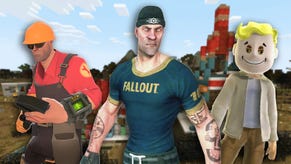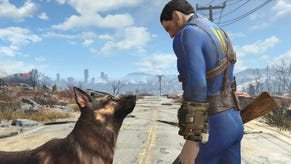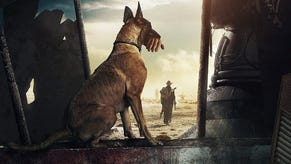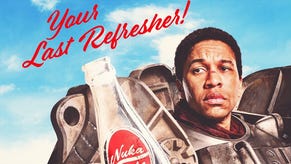Fallout: New Vegas
Roulette the dogs out?
The Bear Grylls approach proves essential in Hardcore Mode, perhaps the most striking and beneficial addition to the game. Activated at the start, it plays up the survival aspect by introducing numerous realistic variables to your game. You need to eat, drink and sleep: hunger, thirst and sleep deprivation will hinder, disorient and eventually kill you if you don't keep on top of them. Ammo has weight in Hardcore Mode, so you can't merrily stuff your pockets with every shell and bullet you find. Efficient inventory planning soon becomes a pressing requirement.
Most importantly, healing items no longer instantly top up your health, but fix you over time, forcing you to be much more tactical in your confrontations. Crippled limbs must be fixed using the rare Doctor's Bag item or patched up by an actual doctor. You can't simply dash in and spam the hotkey for stimpacks during a fight, but have to really think about how you can take down, say, a cellar full of hulking Nightkin without being squished into a fine paste.
It's a brilliant decision, and one that fits perfectly with the aesthetic of the game, forcing you to fully engage with its radiation-scorched landscape. Before, food and water were simply optional health pick-me-ups. Now they form a balancing act, as you weigh up the benefits of curing dehydration sickness with the radiation poisoning you'll get from slurping out of a manky old sink. It's also great to see an extra layer of difficulty that doesn't rely on simply making your enemies bulletproof (yes, Mass Effect, that means you) but instead forces you to play smarter, rather than harder.
The only addition that simply doesn't work is the enhanced use of companion characters. These were present in Fallout 3 (RIP, Dogmeat) but now come with a command wheel that supposedly gives you more control over them.
Trouble is, what they need is better AI, not a rudimentary selection of orders that are inadequate for the game's many obstacles. Companions bestow unique perks (more if you complete their side-quests) and are very handy for carrying additional items and supplying extra fire-power, but their tendency to dash off into battle against any enemy that passes within visual range, even when supposedly set to 'Passive' mode, makes them more trouble than they're worth.

I lost count of the number of times I turned around to discover they'd sprinted off to tackle a Deathclaw single-handed, standing two feet away from it and firing wildly. Eventually, I stopped reloading to keep them alive and let them commit suicide. Compared to the huge strides BioWare has made in RPG party design, this is an area Fallout 4 would do well to either improve on or avoid altogether.
Your companion's dim-witted nature is perhaps connected to the creaking Gamebryo engine, which still carries a lot of Oblivion's clunkier aspects in its digital genome. Interior maps remain frustratingly vague, character models are still bloated and odd, and both people and objects are prone to random jigging or getting lodged in doors and rocks.
The game can still throw out some glorious vistas – the distant lights of the Strip twinkling in the wilderness – but mid-range details pop in awkwardly and the frame rate chugs too often for comfort. There are even complete game freezes, usually after prolonged play sessions, though Bethesda assures us that this is a known issue and a day-one patch will fix it.
Fallout: New Vegas is still a fantastic game, only slightly held back by its increasingly outdated tech. Obsidian has created a totally compelling world and its frustrations pale into insignificance compared to the immersive, obsessive experience on offer. Just like the scorched scenery that provides its epic backdrop, New Vegas is huge and sprawling, sometimes gaudy, even downright ugly at times – but always effortlessly, shamelessly entertaining.








